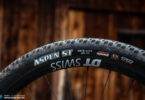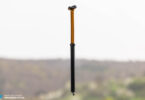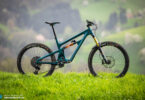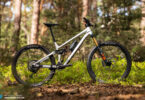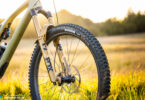If you’re on a budget and looking for a new trail bike, you’re bound to come across the RADON SLIDE TRAIL 10 sooner or later. Given the bike’s high-end spec and great looking colour scheme, the direct-to-consumer brand’s pricing seems unbeatable. Is it the perfect deal?
Click here for an overview of the best trail bike in test.
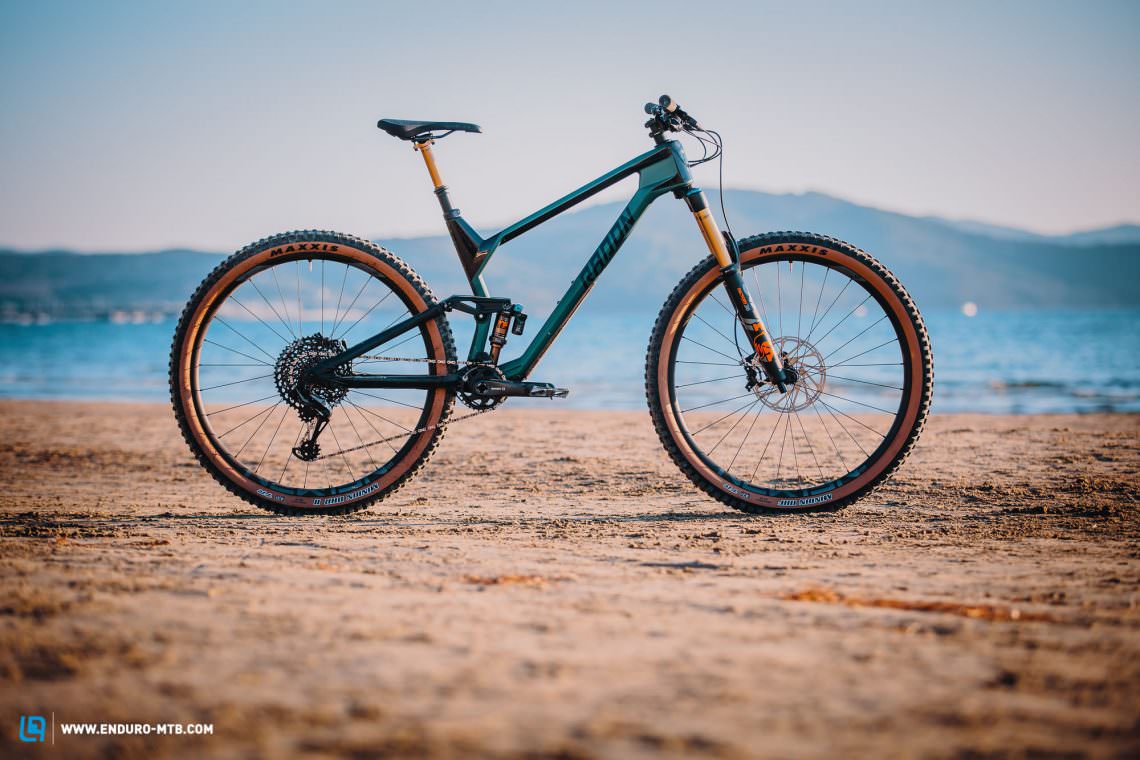
The 14.08 kg RADON SLIDE TRAIL 10 combines a carbon front triangle with an aluminium rear end. The German brand’s bike rolls on 29″ wheels and offers 150/140 mm travel. Its prow-like head tube will undoubtedly turn a few heads on the trail. RADON have integrated a flip-chip that allows you to choose between two geometry settings, though we rode the bike almost exclusively in the slack setting. Priced at € 3,799, the RADON is the most affordable bike on test despite its complement of high-end componentry. That FOX 36 Factory fork with its GRIP2 damper is a highlight and sure to draw some attention! The aluminium NEWMEN wheels are also known to be hard-hitting and should offer long-lasting trail fun. RADON rely on SRAM X01 components for the drivetrain where it’s visible (derailleur and crankset) but save on the cassette and the shifter, relying on GX components instead. Unfortunately, when it comes to the tires, RADON also chose looks over performance. The tan wall casing of the MAXXIS Minion DHF/DHR II tire combo looks great but only comes with the hard dual rubber compound, limiting the grip available. On the other hand, the 30t chainring takes the edge off the steepest climbs and thanks to the MRP chain guide, the chain always stays exactly where it belongs.
Radon Slide Trail 10
€ 3,799
Specifications
Fork FOX 36 FLOAT Factory GRIP2
Rear Shock FOX DPX2 Factory
Seatpost FOX Transfer Factory 150 mm
Brakes SRAM G2 RSC 200/180 mm
Drivetrain SRAM GX/X01 30/10-50
Stem Race Face Turbine R 50
Handlebar Race Face Turbine R 780 mm
Wheelset Newmen Evolution SL A.30
Tires MAXXSI MINION DHF/DHR II EXO Skinwall EXO 2,5/2,4
Technical Data
Size S M L XL
Weight 14,08 kg
Wheelsize 29"
Travel (f/r) 150/140 mm
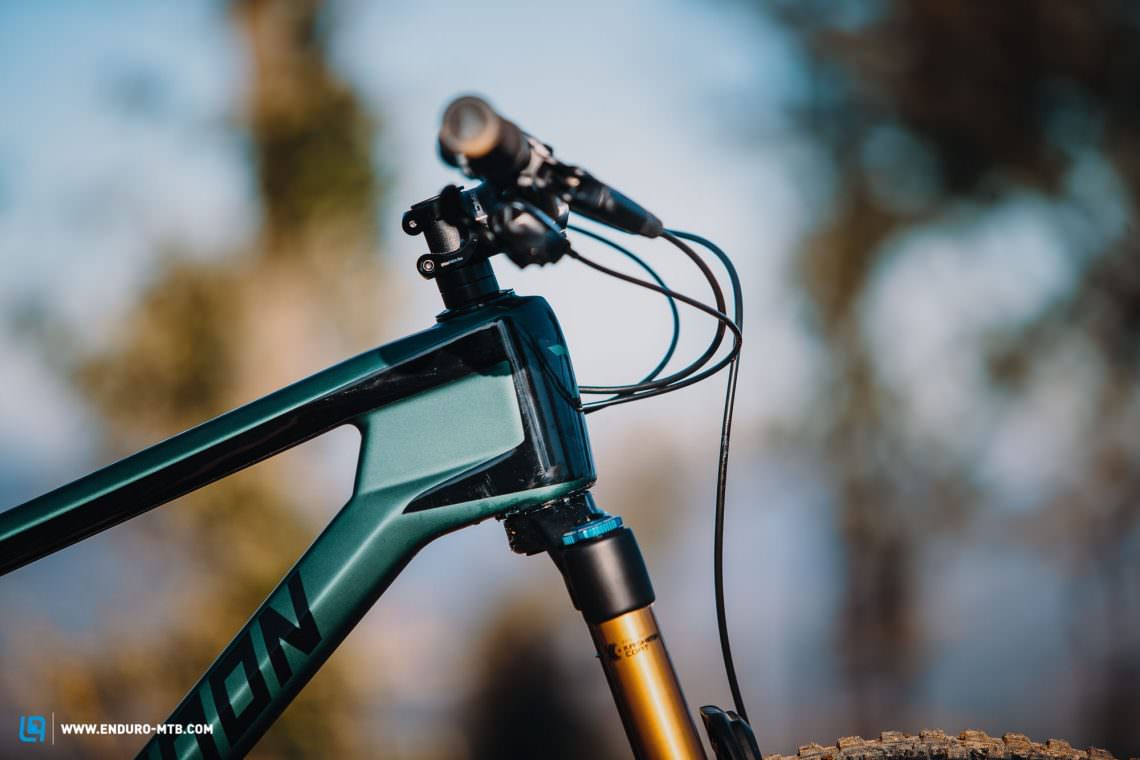
A head tube that will divide the mountain biker community – the prow-like head tube of the RADON SLIDE TRAIL is polarising. You can clearly feel the head tube’s stiffness on the trail, but this makes the bike’s handling very demanding at speed.
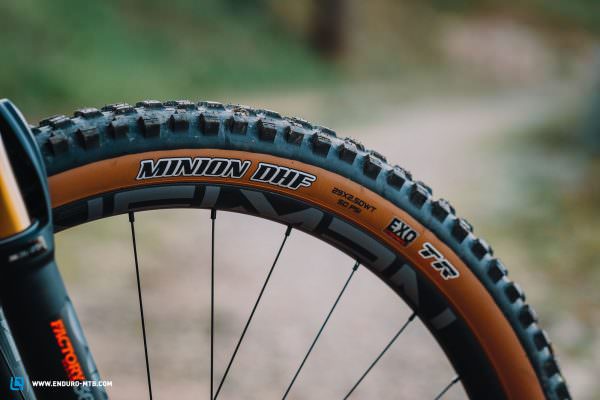
Unfortunately, the tan wall casing of the MAXXIS Minion DHF/DHR II tire combo is only available in the hard DualCompound rubber. Looks good, but it’s less grippy.
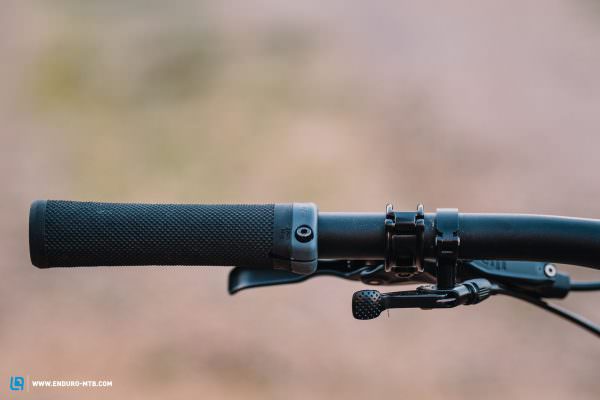
You might as well hold on to the handlebar without grips – the SDG grips are just that hard. We recommend swapping them for something softer.

We would have preferred a steeper seat tube angle for some climbs, but the bike’s slack geometry setting makes more sense for the downhills. Since it’s annoying to constantly change the setting, we kept the SLIDE TRAIL in the low setting throughout.
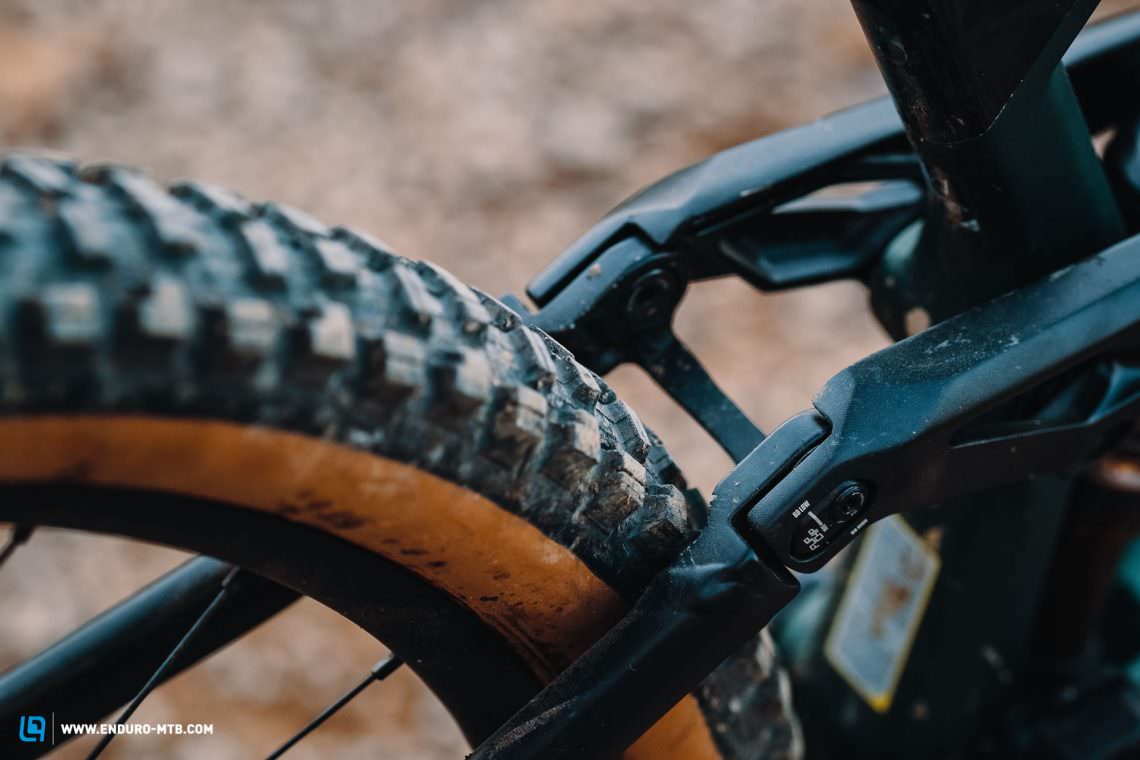
The tire clearance in the rear is very tight. Combined with a noticeable amount of flex in the rear end, the tire rubs against the seat stays.
Geometry of the RADON SLIDE TRAIL 10
The geometry of the RADON SLIDE TRAIL 10 looks excellent on paper. At 464 mm in size L, the reach is neither particularly long nor too short. The 25 mm bottom bracket drop plays it equally safe and the head and seat tube angles look about right at 65.6° and 75.5° respectively.
The RADON performs best on flowing trails, where it scores with its good-natured handling and sensitive suspension.
| Size | S | M | L | XL |
|---|---|---|---|---|
| Seat tube | 392 mm | 425 mm | 455 mm | 490 mm |
| Top tube | 571 mm | 592 mm | 615 mm | 637 mm |
| Head tube | 100 mm | 110 mm | 120 mm | 135 mm |
| Head angle | 65,6°/66.6° | 65,6°/66.6° | 65,6°/66.6° | 65,6°/66.6° |
| Seat angle | 75,5°/76.5° | 75,5°/76.5° | 75,5°/76.5° | 75,5°/76.5° |
| Chainstays | 435 mm | 435 mm | 435 mm | 435 mm |
| BB Drop | 25/11 mm | 25/11 mm | 25/11 mm | 25/11 mm |
| Wheelbase | 1,180 mm | 1,202 mm | 1,226 mm | 1,248 mm |
| Reach | 428 mm | 445 mm | 464 mm | 481 mm |
| Stack | 605 mm | 614 mm | 623 mm | 636 mm |
The riding position on the SLIDE TRAIL 10 is slightly stretched compared to the competition. On flat terrain, the bike is very comfortable but as soon as you hit a steep climb, the FOX DPX2 shock wallows and the seat tube angle slackens out. We would advise using the climb switch to keep the rear suspension sitting higher in its travel and to suppress pedal bob. Unfortunately, the shock’s low position makes the lever hard to reach. We’ve previously ridden a lower-end model of the RADON specced with RockShox suspension and we could hardly believe what a difference the shock tune can make. When putting down the power, flex in the rear end means the tire rubs audibly on the seat stays – a definite no-go! In general, the RADON prefers taking it easy on the climbs and doesn’t motivate you to sprint or push hard.
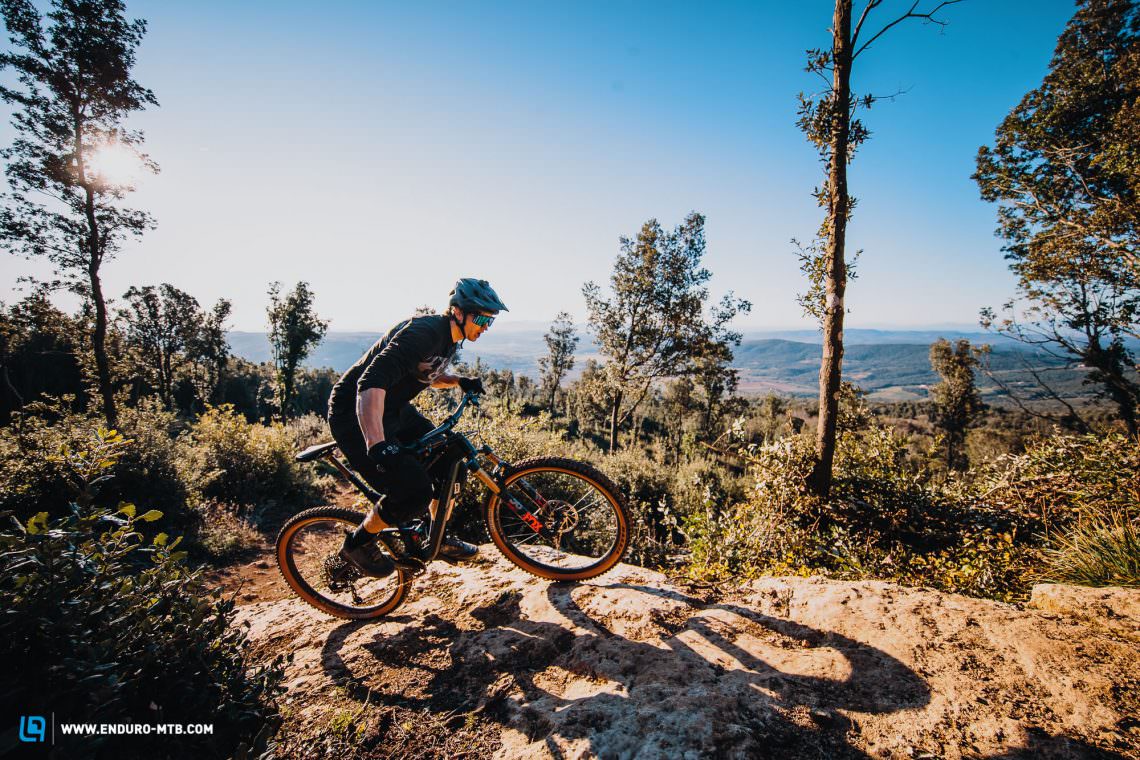
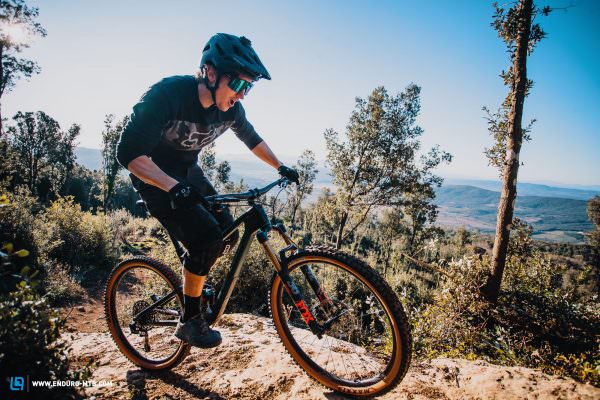
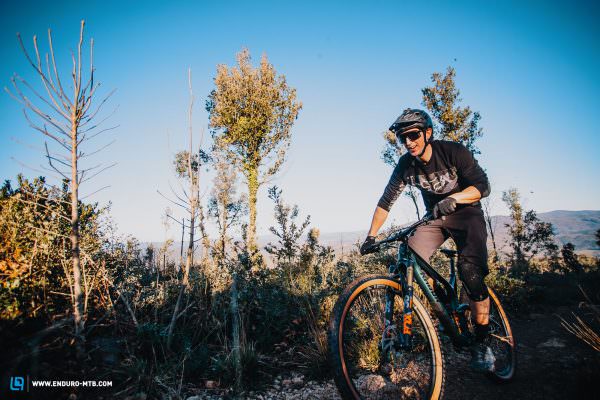
Componentry isn’t everything: despite its high-end spec, the RADON can’t keep up with the best bikes in the test. Here, less money also buys you less performance!
On the descents, the RADON reveals its good-natured side. The FOX suspension performs sensitively, absorbing small- and medium-sized bumps and generating lots of traction at moderate speeds. The bike’s handling is predictable when cornering and the weight distribution between the wheels is balanced. However, if you let off the brakes on demanding descents, the RADON not only lacks grip but also requires significantly more input and a very active riding style. The bike feels sluggish and cumbersome. Amongst other things, this can be attributed to the 800 mm wide Race Face handlebar as well as the firm rear suspension. The wide bars pull the rider forward and limit mobility.


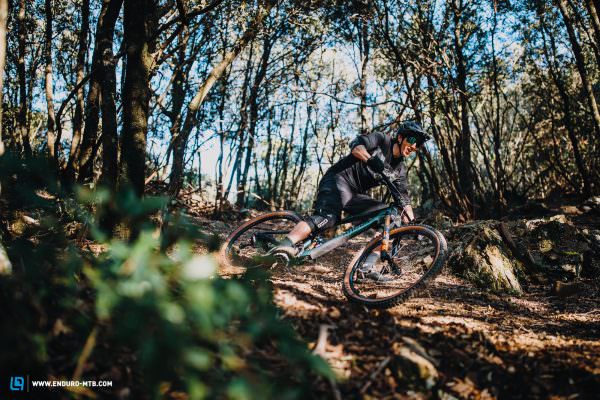
Tuning tips: tape the chainstay | grippier tires | more comfortable grips
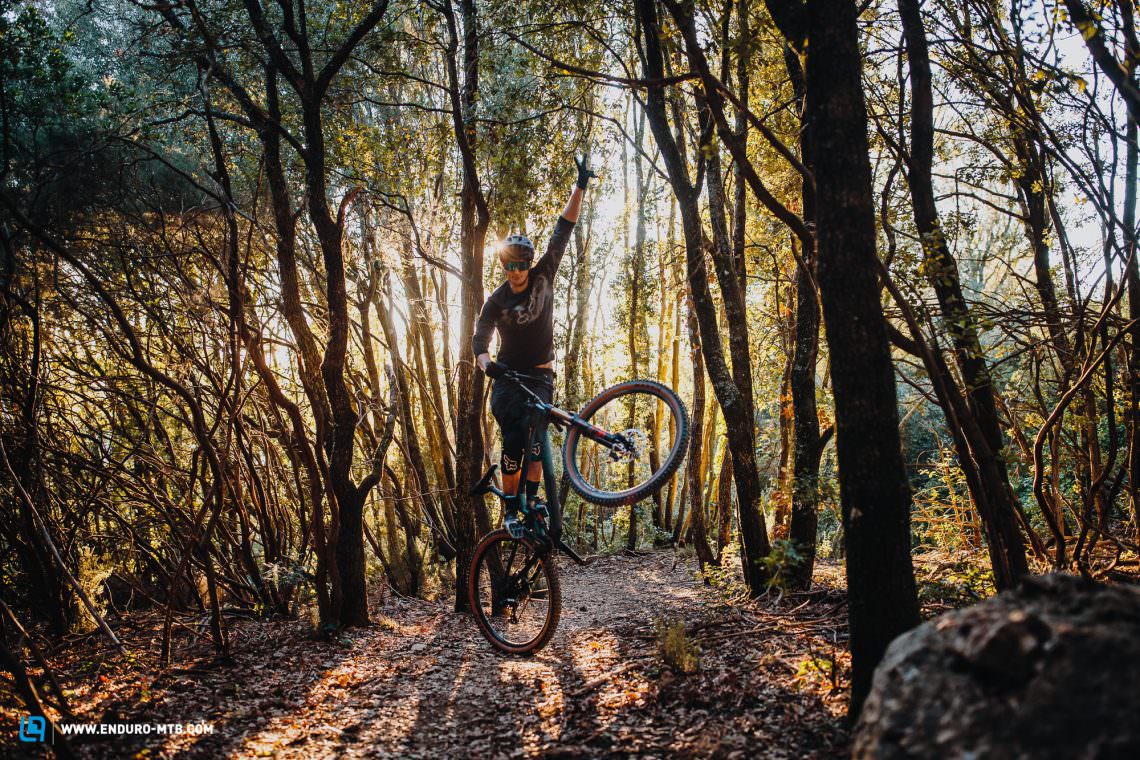
How does the RADON SLIDE TRAIL 10 compare to the competition?
In terms of its spec and price, the RADON is almost unrivalled in this test and is a good choice for more relaxed riders. Those who like it rough will find significantly more capable companions in the Nukeproof or YT. Climbing, the wallowy rear suspension slackens the seat tube angle and will slow you down – here the Ibis, Trek and Norco are in league of their own.
Conclusion of the RADON SLIDE TRAIL 10
The RADON SLIDE TRAIL 10 is a trail bike that inevitably attracts a lot of attention for its great spec at an unbelievable price. However, the handling can’t keep up with the best bikes in the test and it also has some failings regarding the componentry and frame. The bike doesn’t do much wrong, but it doesn’t do much really right either.
Tops
- high-end spec at a fair price
- predictable and balanced handling
- nice colour scheme
Flops
- generates little grip at speed
- tire rubs the frame
- inadequate chainstay protection
For more information head to radon-bikes.de
The test field
Click here for an overview of the best trail bike in test.
All bikes in review: Cannondale Habit Carbon 1 (Click for review) | Canyon Spectral CFR 9.0 SL (Click for review) | Giant Trance Advanced Pro 29 (Click for review) | Ibis Ripmo AXS (Click for review) | Nukeproof Reactor 290 (Click for review) | Norco Optic C1 (Click for review) | Orbea Occam M-LTD (Click for review) | Santa Cruz Hightower CC X01 Reserve (Click for review) | Scott Genius 900 Tuned AXS (Click for review) | Specialized Levo SL Expert Carbon (Click for review) | Specialized S-Works Stumpjumper SRAM AXS 29 (Click for review) | Trek Fuel EX 9.9 X01 AXS Project ONE (Click for review) | Yeti SB130 TLR (Click for review) | YT JEFFSY CF PRO (Click for review)
Did you enjoy this article? If so, we would be stoked if you decide to support us with a monthly contribution. By becoming a supporter of ENDURO, you will help secure a sustainable future for high-quality mountain bike journalism. Click here to learn more.
Words: Photos: Christoph Bayer, Finlay Anderson, Markus Frühmann, Jonas Müssig




